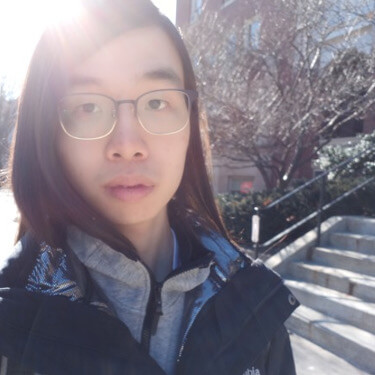Lok

Craft with Wong Tin Lok, interviewed by Ryan Hui
What was your original motivation in drafting this CNF piece? How did you generate your raw materials for your work? How did you select which angle to try out?
Lok: I find it hard to write something that does not look deep into myself. In my trials to generate raw materials for my CNF, I focus on a longer timespan and pick certain memories that speak to me. In other words, I trace my memory as a journey of self-discovery.
What particular time and place, period or moment, did you find yourself exploring in your chosen CNF writing?
Lok: Linear timeline, thinking about himself, three-section article, rearranged into chronological manner.
What revelations came up, or came into, your own CNF that you were not expecting?
Lok: I didn’t come up with a connection between family and personal life at first, and as an author I have strong opinions about things I like and things I don’t like. It would not have made sense if I only wrote about me not liking photography but not explaining the reason why. So I dug deep into why I didn’t like photography in the first place, so as to rationalize what I’m trying to create in my work. Sontag’s quote also captured me because it acts as an agent that makes the quote meaningful in the piece and also relevant to my personal history, so in this way, I find it a revelation to understanding myself more than I expected.
What materials or objects or guiding details did you discover that helped you to explore your writing?
Lok: The materials and objects were 95% true in my work, although I altered some aspects to make the piece more appealing. For example, I altered ‘mother’ to ‘father’ when mentioning bedtime stories. I took an object-based approach, so my work generally revolves around objects; I also write about symbols, and I think these helped me piece together a narrative for my work.
What parts of your CNF draft do you feel are calling you to revisit to learn or discover more?
Lok: I find it hard to explain things totally and in a very detailed manner, like what appealed to me about the city of Tokyo at the end. I would like to work on the birthday scene, because the description is a bit plain, and I would probably explore more on writing about the uncomfortable feeling about photography that had been hard for me to put into words.
What materials or decisions of drafting did you find were leading you away from where you realized wanted to go? What are you editing out so far? What raw materials or decisions were leading you back to where you wanted to go?
Lok: I tend to keep my piece as verbal as possible, because in my mind I was thinking about typing/transcribing my engagement with photography into oral history, but in the same way it also led me to edit a lot of phrases because they were not always clear in their meaning when the tone is too verbal. It’s like doing heavy editing on random thoughts, and most of the time I feel that I didn’t have the luxury to process all those thoughts.
What is one image, or one detail or observation, that stands out for you, as carrying your story with it now, as you keep drafting? A detail or image or phrase of your own work that struck you as crucial, even if you’re not sure how or why yet?
Lok: Susan Sontag’s quote made me reflect about the process of growing up. From her words I am aware that life comes in different shapes and forms and doesn’t always come with a happy ending. I think it was evident in my process of drafting this piece that I engage with the issue of reconciliation with my past and the choices I made. This includes an understanding of materiality, especially about polarized pictures, that taking photos is a process to transcribe something physical into something intangible.
What is the braid of self-contradiction that is giving your CNF its working structure and carrying it powerfully so far?
Lok: I think about sections when I am trying to weave the braids in my work, it was a bit hard to go back and forth and I had to switch timeframes in my work in order for the braids to play out as I intend them to.
What new questions are now coming up for you, as the subject of your CNF? What questions are coming up for you as the author of your CNF?
Lok: I guess it would be about the skills of using close observation in writing CNF. I think we need to be careful writing close observation, to be neutral and at the same time to not make it overly narrative, and it’s important to let our readers feel before they know the answer. I think another challenge in CNF is that I cannot make things up too much, but sometimes imagination upon existing material is what prompts me to write too.
Is there any further knowledge or research you need? Are there certain aspects that need more time and comfort to explore further?
Lok: I need more research on the Tokyo part; I need to explore more on how the change happened for me to not hate photography for the first time. That trip marks my longest time travelling alone, and perhaps exploring the solidarity and isolation that I experienced would help explain why the change was prompted, and at the same time also going back to why I had those negative thoughts about photography in the first place. Last but not the least I also need to dig deeper into my education in the Arts and how it developed me as a person, which shaped how, why and what I write.
